
News & Blog
Great things in business are never done by one person. They’re done by a team of people. We have that dynamic group of peoples
This article deeply explores the unique material of opalescent glass, introduces its definition and classification in detail, deeply analyzes the formation mechanism, comprehensively analyzes the advantages and disadvantages, and focuses on its application in the field of cosmetic glass packaging. Through rich data, detailed cases and professional analysis, it helps readers fully understand the important value of opalescent glass in industrial production, especially in the cosmetic packaging industry, and provides valuable reference for relevant practitioners and followers.
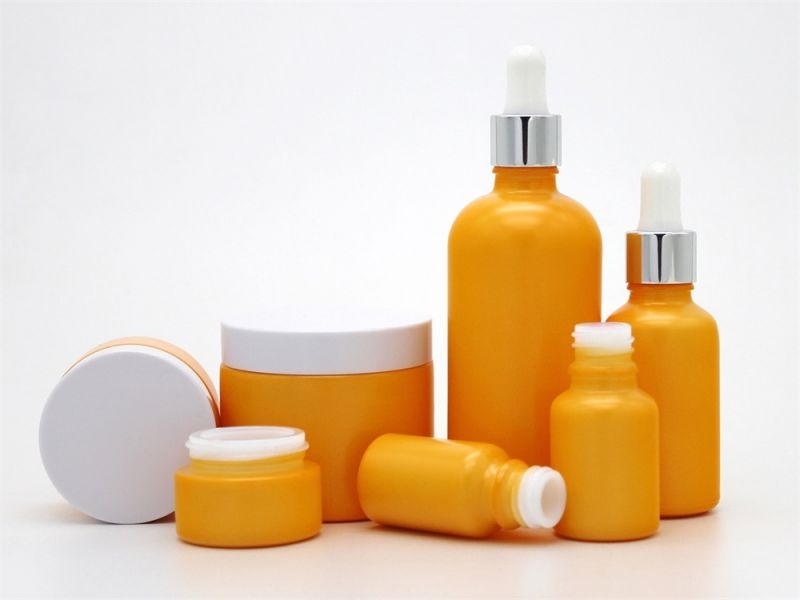
Opal glass, like an elf covered with gauze in the glass world, is a very distinctive translucent milky white glass. Its uniqueness lies in the fact that by cleverly adding opacifiers such as fluorite, cryolite, sodium fluorosilicate, calcium phosphate, etc. to the ingredients, these opacifiers melt in the glass during the glass melting process. When cooled, countless tiny suspended crystals will precipitate, making the glass appear opaque. This special structure allows light to scatter in the glass and cannot be completely transmitted, thus giving the glass a soft visual effect.
In the application scope of utensil glass, opalescent glass can usually be divided into two categories: white porcelain glass and imitation jade glass. White porcelain glass is based on its unique high Al₂O₃ content. According to the difference in Al₂O₃ content, it is further divided into large white porcelain glass (Al₂O₃ content ≥ 10%), small white porcelain glass (A1₂0₃ content ≤ 5%) and medium white porcelain glass (Alz03 content is 5% to 10%). Large white porcelain glass has a rich milky texture due to its high content of Al₂O₃; small white porcelain glass is relatively transparent and slightly less opalescent; medium white porcelain glass is between the two. Imitation jade glass, with its translucent and jade-like texture, is unique among glass products and is often used to create high-end and elegant crafts and decorations.
| White opal glass type | Al₂O₃ content range | Appearance characteristics |
|---|---|---|
| Large white opal glass | ≥10% | Rich opal |
| Small white opal glass | ≤5% | Relatively transparent, weak opal |
| Medium white opal glass | 5%~10% | Between the two |
According to the different opacifiers added, opal glass can be divided into fluoride opacified glass, sulfate opacified glass, phosphate opacified glass, sulfide opacified glass, chloride opacified glass and arsenide opacified glass. In addition, there are opacified glasses formed by special methods, such as color opacified glass with colorants added to opacified glass, and phase-separated opacified glass that uses glass phase separation to produce opacifying effects. Different types of opacifiers will give opacified glass different physical and chemical properties and appearance characteristics, suitable for different application scenarios.
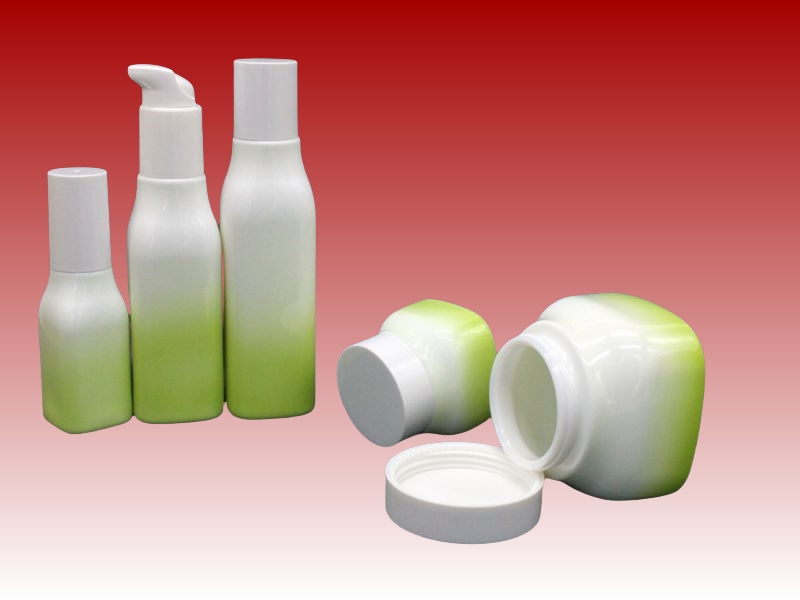
The opacity of glass is essentially the result of complex refraction and scattering of light in glass. When there are countless tiny crystals in the glass, these particles and the glass body form medium interfaces of different densities due to density differences. When light passes through these interfaces, the direction of travel changes, resulting in light refraction. After multiple refractions, the light scatters, making the glass appear opaque.
And these tiny crystals are mainly due to the effect of opacifiers. Some opacifiers are completely insoluble in the glass body and exist in the form of dispersed particles; other opacifiers have limited solubility. As the temperature decreases, the solubility decreases, and there is a tendency to crystallize after reaching a supersaturated state. However, due to the high viscosity of the glass body, these substances cannot be precipitated in time when the glass is cooled, and they need to be heated to promote crystallization, thereby forming an opacifying effect. For this reason, in actual production, some opalescent glasses can show opacity in the forming stage, while others require subsequent heating treatment.
In addition, the opacity of glass is closely related to the size and number of opacifier particles. Studies have shown that when the particle size of the opacifying substance is close to 100nm, the glass only has a slight opacification phenomenon; opacified glass with particles of 5 to 100nm is coarse-grained; when the particle size reaches 100 to 200nm and the number is sufficient, the glass will show a significant opacification effect. In strong opacified glass, there are about 100,000 opacified particles per 1mm³. A large number of particles greatly enhances the light scattering effect and improves the opacity of the glass.
Unique visual effect: The translucent milky white appearance of opacified glass gives people a soft and elegant visual experience, which is very attractive in the fields of decorations, crafts, etc. For example, some high-end glass lamps use opacified glass to make lampshades. After the light passes through the opacified glass, it becomes soft and not dazzling, creating a warm and romantic atmosphere.
Good light-shielding performance: The high light-shielding performance of white porcelain glass can effectively block ultraviolet rays and other light, play a good protective role for the internal products, and extend the shelf life of the products. In the field of cosmetic glass packaging materials, this feature is particularly important, which can prevent cosmetics from deteriorating due to light and ensure product quality.
Excellent texture: While ensuring the gloss of glass, opal glass has a ceramic-like texture, especially white porcelain glass, which combines the transparency of glass with the warmth of ceramic, and has a luxurious texture of oriental culture, which can enhance the grade and quality of products. Many high-end cosmetics brands choose opal glass as packaging material because of its unique texture.
Complex production process: The production of opal glass requires precise control of process parameters such as the amount of opacifier added, melting temperature, and cooling speed to ensure the stability and uniformity of the opacification effect. Once a certain link deviates, it may lead to inconsistent opacity or other quality problems, increasing the difficulty and cost of production.
High cost: Due to the use of opacifiers and complex production processes, the production cost of opal glass is higher than that of ordinary glass. This, to a certain extent, limits its application in some cost-sensitive fields.
Fragility: Like ordinary glass, opal glass is also fragile. Special attention should be paid to protection during transportation and use, otherwise it is easy to cause damage, increasing the loss rate of the product.
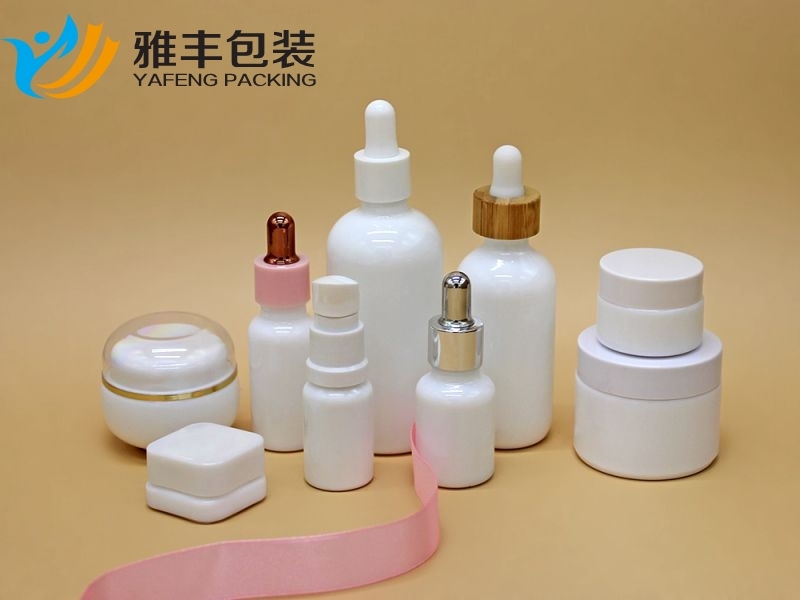
In the cosmetics industry, packaging is not only a container for the product, but also an important embodiment of the brand image and product quality. With its unique advantages, opal glass has become a packaging material favored by many cosmetic brands.
High-end cosmetic packaging: Many internationally renowned cosmetics brands, such as Chanel and Dior, widely use opal glass packaging materials in their high-end series of products. For example, a certain essence of Chanel uses white porcelain glass as the bottle body. Its elegant milky white appearance and delicate texture complement the high-end positioning of the brand and greatly enhance the added value of the product.
Skin care product packaging: For skin care products, good light-shielding performance is essential. Opal glass can effectively block light, protect the active ingredients in skin care products from oxidation and decomposition, and extend the service life of the product. Some skin care brands that focus on natural ingredients choose opal glass as packaging to convey the high quality and safety of their products to consumers.
Makeup product packaging: In the field of makeup, opal glass is also widely used. For example, the shells of some high-end lipsticks are made of opal glass, which not only looks beautiful, but also provides good protection for the product, while improving the consumer experience.
[Insert several pictures of products of well-known cosmetics brands using opal glass packaging materials]
As a unique glass material, opal glass has shown important value in many fields with its unique translucent milky white appearance, good light-shielding performance and superior texture, especially in the field of cosmetic glass packaging materials, becoming a key factor in improving product quality and brand image. Although it has disadvantages such as complex production process, high cost and fragility, with the continuous advancement of technology and the promotion of market demand, the application prospects of opal glass are still broad. For cosmetic glass packaging manufacturers, in-depth understanding of the characteristics and applications of opal glass, continuous optimization of production processes, and improvement of product quality will help to gain an advantage in the fierce market competition and provide customers with better and more attractive packaging solutions.
The above article presents the characteristics and applications of opalescent glass from multiple dimensions. If you have other ideas about the content structure and data cases, please feel free to let me know.
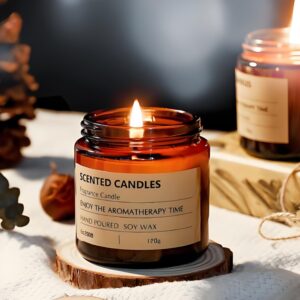
Give old candles new life! Learn how to safely remove wax, recycle candle jars, and get creative with repurposing ideas. Eco-friendly tips for candle lovers.
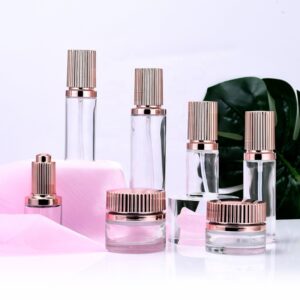
Explore quality control in cosmetic glass bottle manufacturing. Learn about raw materials, testing, inspection, and standards for high-quality packaging.
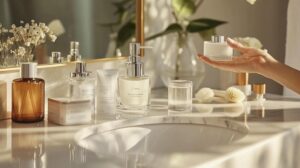
Discover why glass packaging is essential for preserving skin care products, offering sustainability, safety, and premium aesthetics.
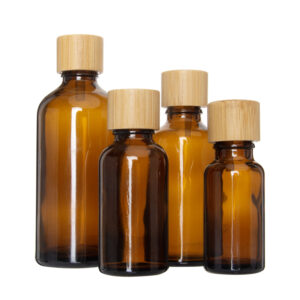
Discover the sustainable revolution in beauty packaging! Learn how bamboo is transforming the cosmetic industry with its eco-friendly, durable, & stylish appeal.

Explore why glass is the preferred material for perfume bottles, its benefits, and design evolution.
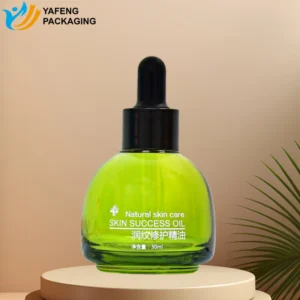
Discover how spray coating enhances skincare and perfume packaging by improving appearance, brand identity, durability, and safety with advanced technology.
Explore custom vs. stock bottles for skincare packaging. Learn how Yafeng’s solutions boost brand identity, quality, and efficiency in this in-depth guide.
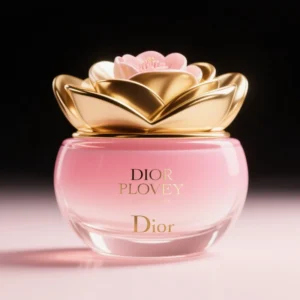
Discover how gradient color spray transforms cosmetic glass bottles, enhances brand image, and boosts product appeal with expert insights from Yafeng Packaging.
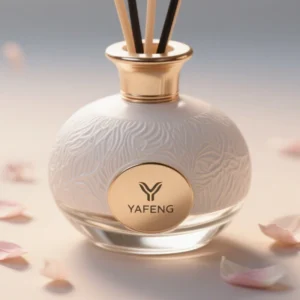
Discover how rattan aromatherapy works and why glass bottles are the best choice for long-lasting scent, safety, and sustainable, elegant packaging.
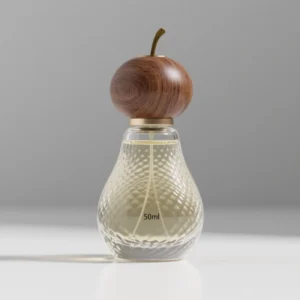
Discover the top 10 woods for perfume caps, comparing texture, pros, cons, and price to help you choose the best material for stylish, high-quality packaging.
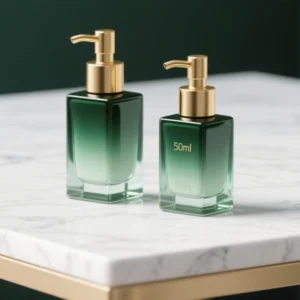
Explore cosmetic glass bottles—safety, eco benefits, types, coloring, mold costs, MOQ, and production tips—in one expert, data-rich guide.
WhatsApp us